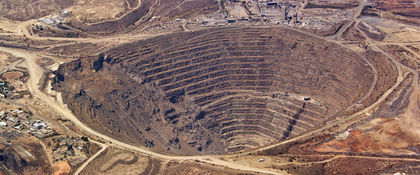Malaysia - Mining

Petroleum and liquefied natural gas (mainly from Sabah and Sarawak) was Malaysia's second top export commodity in 2002, and tin mining and smelting were a top industry in Peninsular Malaysia. Production and employment in the tin sector have declined significantly in recent decades, as most of Malaysia's extensive resources (ranked second in the world) were depleted or were beneath developed lands. In 2001, Malaysia mined and processed some 4,973 tons of tin metal and concentrates—falling below the 5,000-ton level for the first time in the country's mining history—down from 6,307 in 2000, 7,340 in 1999, and 36,900 in 1985; production decreased because of depleted high-grade reserves and lower tin prices in the Kuala Lumpur Tin Market. The number of working mines also declined, from 1,000 in 1974 to 37–46 in 2001. To revitalize the tin-mining industry, the Malaysian Chamber of Mines recommended that the government of Perak, one of the two main tin-mining states (Selangor being the other), change the royalty rate to a flat rate. Malaysia was the second-largest producer of refined tin in 1997.
Malaysia also had substantial resources of such tin-associated minerals as ilmenite, monazite, struverite (a columbium [niobium]/tantalum-bearing mineral), and zircon. Malaysia ranked 10th in the world in rare earths reserves, and struverite output increased tenfold in 2001 because of world demand for the production of tantalum metal products; all struverite was exported to China. Malaysia also had important mineral resources of barite, bauxite, carbonate rocks, clays, coal, copper, gold, iron ore, and silica.
Subsoil resources were public property of the states, which granted prospecting licenses and mining leases. Royalties on coal and gold accrued to the states, and export duties were levied on other minerals by the government, which returned a portion to the states. GDP grew by 0.4% in 2001, compared with 8.3% in 2000. The mining and quarrying sector grew by 0.2% in 2001, compared with 3.1% in 2000, and mining and quarrying contributed 6.9% to GDP in 2001. Mineral exports totaled $8.5 billion in 2001, or 9.7% of total exports; of those, nonfuel minerals accounted for $566 million. The major export-earning nonfuel minerals in 1997 were: refined tin ($176 million); copper concentrates ($45 million); and other minerals, including ilmenite, kaolin, bauxite, clays, iron ore, monazite, silica, zircon concentrate, and mica ($28 million). The Malaysian Nature Society submitted a proposal to the Perak State government in 2000 to convert a tract of old tin mining land in Batu Gajah into a recreation and conservation site, to be called Kinta Park, which would also promote the area's tin-mining heritage. In 2001, the Penang Island Municipal Council announced that tantalum-bearing minerals were discovered underneath Malaysia's oldest stadium, in Georgetown, and called for interested parties to prospect and mine out the minerals before renovation work could be started on the stadium. Iron ore production increased markedly after World War II, under the stimulus of Japanese demand, but production subsequently dwindled from a peak of3.9 million tons (iron ore and concentrate) in 1965 to a low of 181,600 in 1985 and 376,000 in 2001. The output of bauxite, all of which was exported, decreased from 703,561 tons (gross weight) in 1975 to 279,000 in 1997, 223,000 in 1999, 123,000 in 2000, and 64,000 in 2001; annual capacity, at the Teluk Rumania and Sg. Rengit mines, in Johor, was 400,000 tons. Malaysia ceased copper production, all of it at the Mamut Mine, in 1999; there were large reserves on Sabah, and output was 131,832 tons in 1985, before dropping to 13,907 in 1998 and 4,600 in 1999. As a result, silver production, most of which was a byproduct of copper mining, dropped from 9,647 kg in 1997 to 4 and 3 kg in 2000 and 2001, respectively. Other metal minerals extracted included gold, columbite, monazite, kaolin, ilmenite, zircon concentrate, and titanium dioxide (from Terangganu). Malaysia was a net exporter of all its coal, copper concentrate, ilmenite, rare earths, and zircon concentrate, and most of its smelted tin. Industrial minerals produced in 2001 included barite, hydraulic cement, clays and earth metals (80 million tons, up from 33 million tons in 1999), dolomite, feldspar, fertilizers, kaolin, limestone, mica, nitrogen, salt, sand and gravel, silica sand, and stone. Silica sand came mainly from natural sand deposits in Sarawak (56.6 million tons of estimated reserves) and Johor and from tin mine tailings sand in Perak and Selangor; 85% was exported and 63% of exports went to Singapore.
Comment about this article, ask questions, or add new information about this topic: